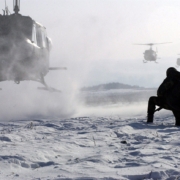What did the UN do to help Somalia?
Topic of Study [For H1/H2 History Students]:
Paper 1: Safeguarding International Peace and Security
Section B: Essay Writing
Theme III Chapter 2: Political Effectiveness of the UN in maintaining international peace and security
Historical Context: The rise and fall of Siad Barre
After a ten-year transition period under a United Nations (UN) Trusteeship in the 1950s, Somalia gained independence. From 1960 to 1969, Somalia was led by multi-party system. In 1969, Major General Mohamed Siad Barre became President after a bloodless coup.
Under the Cold War context, Somalia had received Soviet military and financial aid. Yet, the Soviet Union disapproved Barre’s decision to launch an invasion of Ethiopia in July 1977, which was known as the Ogaden War. The war concluded with Somali defeat in March 1978 as well as the termination of Soviet aid.
The Ogaden War had a profound effect on international relations in the Horn of Africa. Russia and Cuba withdrew from the long-standing military and naval bases they had helped build in Somalia, and relocated to what was then the Red Sea coastline of Ethiopia (now Eritrea). As a result, Siad Barre switched allegiance to the West, making his first visit to the USA in 1982 […].
An excerpt taken from “Somaliland: with Addis Ababa & Eastern Ethiopia” by Philip Briggs.
In addition, the Barre government had to contend with clan-based rebellions that lasted throughout the 1980s. By then, more Somalis became disillusioned with a military dictatorship under Barre. The rebellions began with a failed coup attempt in April 1978, which were carried out by disgruntled army officers led by Colonel Mohamed Osman Irro.
By late 1990, the United Somali Congress (USC) launched an offensive on the capital Mogadishu, thus forcing Barre to flee in January 1991.
Enter the United Nations: UNOSOM
After Barre’s self-imposed exile, a civil war broke out between two factions: one that backed the Interim President Ali Mahdi Mohamed and another that supported General Mohamed Farah Aidid. In hopes of brokering peace between the factions, the Secretary-General Javier Pérez de Cuéllar dispatched a UN envoy, James Jonah.
More importantly, many Somali civilians’ lives were undermined by the civil war, thus necessitating humanitarian intervention. By November 1991, about 300,000 people died. Many suffered from malnutrition and other related diseases. Also, a million Somalis fled their homes, giving rise to a refugee crisis.
On 3 March 1992, leaders of both competing factions (Mahdi and Aidid) signed a ceasefire agreement (“Agreement on the Implementation of a Ceasefire”), which granted consent for the UN to deploy military observers to oversee the process.
On 24 April 1992, the UN Security Council (UNSC) adopted Resolution 751, which authorised the deployment of the United Nations Operation in Somalia (UNOSOM). UNOSOM was tasked to distribute food supplies to the Somali civilians with the help of other non-governmental organisations (NGOs), such as the International Committee of the Red Cross (ICRC). However, its relief efforts were hampered by the absence of security, which gave rise to looting by armed gangs.
However, humanitarian aid was preyed upon by a mixture of the warring factions and unaffiliated bandits. The militia leaders used food to pay their fighters and buy weapons that allowed them to extend their control and subsequently their access to wealth. […] Khalil Dale, a British Red Cross worker, recalled:
I’ve been to Afghanistan, two or three times. I’ve been to Sudan, I’ve been to a lot of war zones and famine camps and cholera camps. But I’ve never seen anything like Somalia was at that time. And it was certainly the most frightening place for me, it was the most insecure, unpredictable. You just didn’t know what was going to happen next.
An excerpt taken from “Soldiers and Civil Power: Supporting or Substituting Civil Authorities in Modern Peace Operations” by Thijs Brocades Zaalberg.
General Aidid held dominant control of strategic locations where most of the food aid had arrived from abroad, namely the port and airfield. The problem was so serious that the ICRC had to employ nearly 20,000 armed guards to protect their personnel from looters.
Help is on the way: United Task Force
Frustrated by the lack of progress, the Bush administration supported the UNSC’s resolution to authorise an American-led force to establish a “secure environment for humanitarian relief operations in Somalia”. On 9 December 1992, Operation Restore Hope was conducted by the US government under the United Task Force (UNITAF).
Out of the 38,000 troops deployed, 24,000 were American, reflecting the commitment of the US government to support the UN’s humanitarian intervention in Somalia. Between December 1992 and May 1993, the UNITAF secured nine humanitarian relief sectors, thus enabling the resumption of humanitarian aid to the Somali civilians.
Providing security relief operations was obviously a success. By late December and early January there was consensus worldwide that the US-led intervention enabled the relief organization to deliver much-needed supplies much more effectively. As a result, many thousands of lives were saved. […]
According to the official US Army After Action Report of the Somalia mission, the Bush administration recognized that lasting peace in Somalia could only be achieved by disarming the warlords, reconciliation and assisting in the restoration of law and order and societal infrastructure.
An excerpt taken from “Soldiers and Civil Power: Supporting or Substituting Civil Authorities in Modern Peace Operations” by Thijs Brocades Zaalberg.
What can we learn from this article?
Consider the following question:
– How far do you agree that the failures of the United Nations mission in Somalia were expected?
Join our JC History Tuition to learn more about the United Nations. The H2 and H1 History Tuition feature online discussion and writing practices to enhance your knowledge application skills. Get useful study notes and clarify your doubts on the subject with the tutor. You can also follow our Telegram Channel to get useful updates.
We have other JC tuition classes, such as JC Math Tuition and JC Chemistry Tuition. For Secondary Tuition, we provide Secondary English Tuition, Secondary Math tuition, Secondary Chemistry Tuition, Social Studies Tuition, Geography, History Tuition and Secondary Economics Tuition. For Primary Tuition, we have Primary English, Math and Science Tuition. Call 9658 5789 to find out more.


